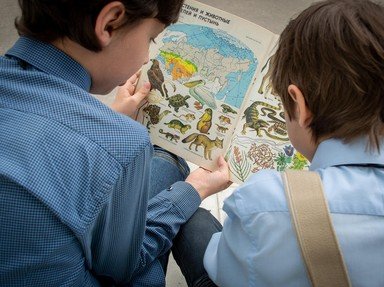Quiz Answer Key and Fun Facts
1. DNA, the molecule that sparked life, had been around for billions of years, but life remained quite dull for most of this. Around 630 million years ago (mya), however, the first complex animals emerged, and life would never look back. Which of these is LEAST like the first complex animals on earth?
2. Around 90 million years after the first complex animals emerged, there was a major change. A feature was developed which allowed these ancient animals' bodies to be preserved in the rocks when they died. This feature is still possessed by crabs, snails, and lobsters. What is this feature?
3. Some animals grew gills, which meant they could take in more oxygen and so could move faster. Thousands of these animals still exist today - big, small, beautiful and dangerous. What animals are these?
4. Although most life was still in the water, one fish developed a simple organ around 400 mya which allowed it to breathe air and so live on land. What type of organ was this?
5. Amphibians evolved around 370 mya, and spent part of their lives on land and part in water. Next were the reptiles, which evolved from amphibians 340 mya and which lived almost entirely on land. Which of these is a reptile, not an amphibian?
6. Shortly after the rise of the dinosaurs (230 mya), the first mammals emerged. These evolved from a type of reptile, but developed several characteristics of their own. Which of these is not a quality of a typical mammal?
7. Another type of animal which evolved from reptiles were the birds. This happened around 155 mya. TRUE or FALSE, the scales of reptiles evolved into the feathers of birds.
8. As mammals evolved, they achieved new standards of intelligence. But as well as brains, they had brawn. TRUE or FALSE, the largest animal to have ever lived is/was a mammal.
9. The order which we humans are part of first appeared around 60 mya. This order also includes gorillas, orang-utans, tarsiers and lemurs. What is the name of this order?
10. 150,000 years ago, after all the fish, lizards, llamas, dolphins and snow leopards had evolved, along came the humans. What is the fancy scientific name for human beings?
Source: Author
doublemm
This quiz was reviewed by FunTrivia editor
NatalieW before going online.
Any errors found in FunTrivia content are routinely corrected through our feedback system.

